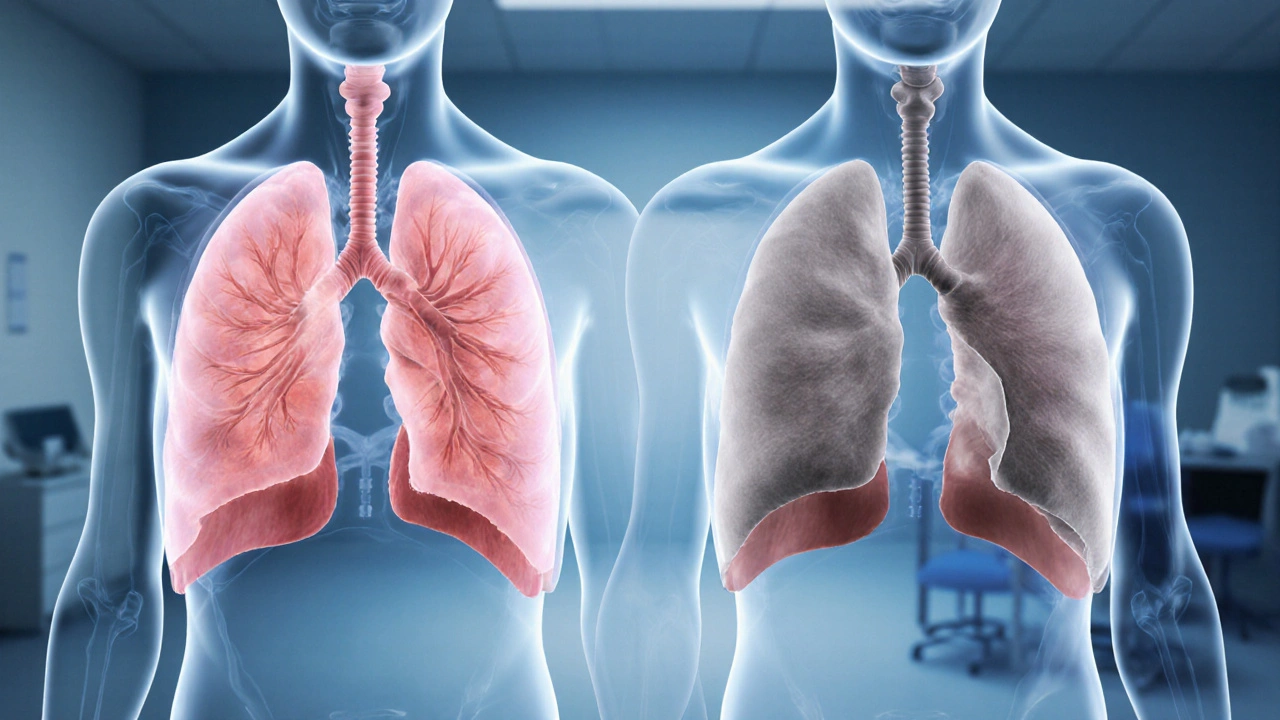
Understanding Emphysema: Causes, Symptoms, and Treatment Guide
Learn what emphysema is, its main causes, warning symptoms, and effective treatment options to manage this chronic lung disease.
If you’re facing COPD, understanding the disease is the first step. When dealing with COPD, Chronic Obstructive Pulmonary Disease, a progressive lung condition that blocks airflow and makes breathing hard. Also known as chronic obstructive lung disease, it typically develops after years of exposure to irritants like cigarette smoke.
COPD encompasses two main sub‑conditions: chronic bronchitis, inflammation of the bronchi that leads to persistent cough and mucus production and emphysema, damage to the air sacs that reduces oxygen exchange. Both shrink the airway diameter and trap air, which explains why shortness of breath, wheezing, and frequent infections are common complaints. Early detection through routine check‑ups can slow the decline, especially when patients use spirometry, a simple breathing test that measures lung capacity and flow rates to gauge severity. Knowing your FEV1 (forced expiratory volume) helps doctors tailor therapy and track progress over time.
Effective COPD management hinges on three pillars: medication, lifestyle change, and monitoring. Inhaler therapy, use of bronchodilator and corticosteroid devices that relax airway muscles and reduce inflammation is the cornerstone. Short‑acting bronchodilators provide quick relief during flare‑ups, while long‑acting combos maintain open airways day‑to‑day. Equally important is smoking cessation, the single most effective intervention to halt disease progression. Even years after quitting, lung function can stabilize, and symptoms improve noticeably. Support programs, nicotine patches, or prescription meds like varenicline boost success rates.
Beyond drugs, pulmonary rehabilitation, a supervised program of exercise, education, and breathing techniques empowers patients to increase stamina and reduce breathlessness. Regular aerobic workouts, such as walking or cycling, strengthen respiratory muscles and improve oxygen uptake. Nutritional counseling also helps because maintaining a healthy weight lessens the workload on the lungs. Monitoring tools like peak flow meters or mobile apps let you spot worsening symptoms early, prompting timely medical attention.
The articles below cover a wide range of topics that intersect with COPD care. You’ll find practical advice on heart‑healthy cholesterol management, strategies for handling anxiety in chronic illness, and tips for optimizing medication adherence. Each piece is chosen to give you actionable insights, whether you’re tweaking your inhaler routine, exploring diet changes, or learning how to discuss treatment options with your doctor. Dive in to build a more informed, proactive approach to living with COPD.

Learn what emphysema is, its main causes, warning symptoms, and effective treatment options to manage this chronic lung disease.